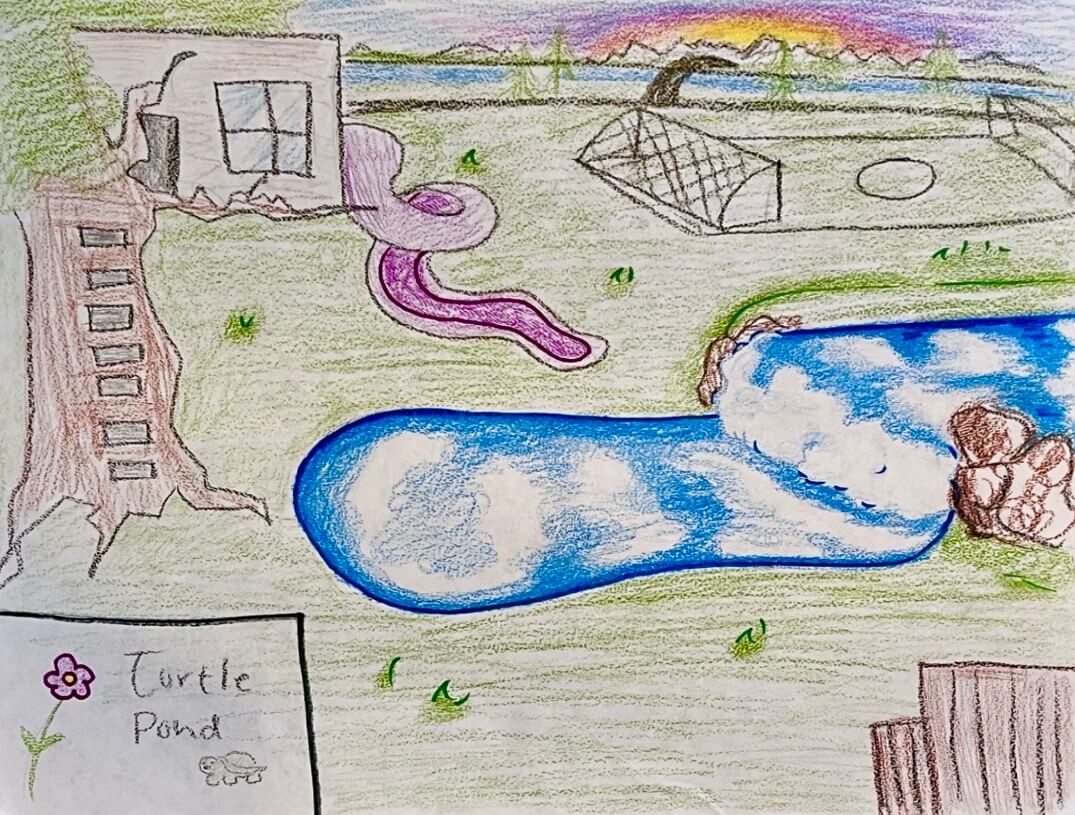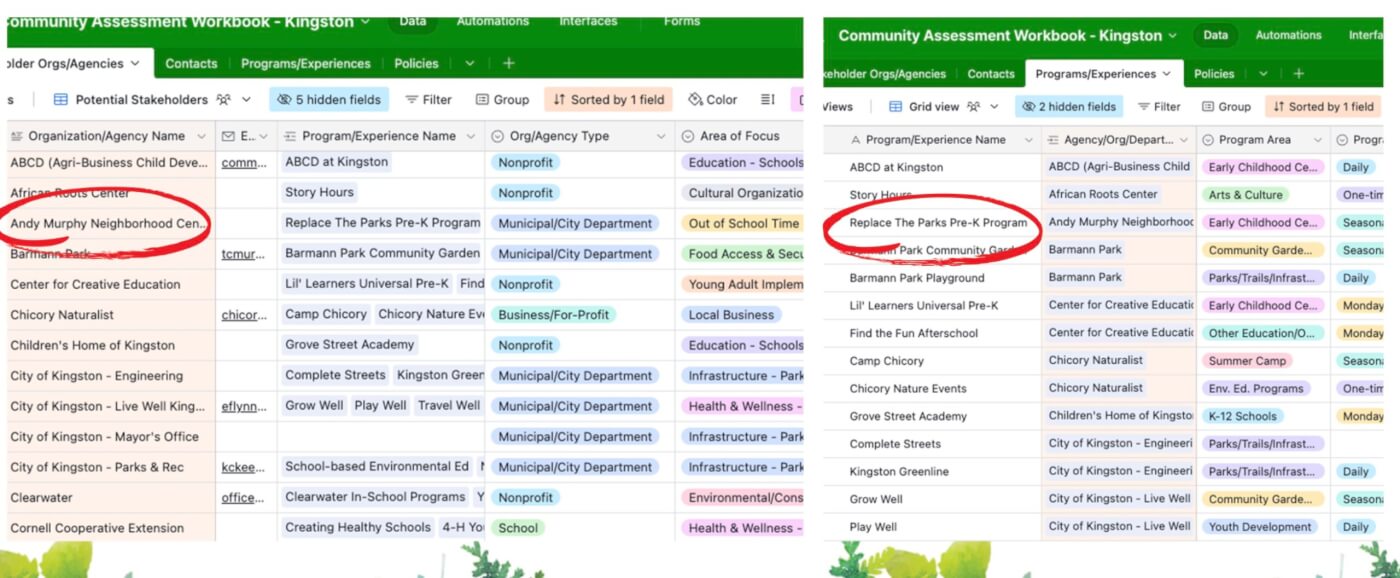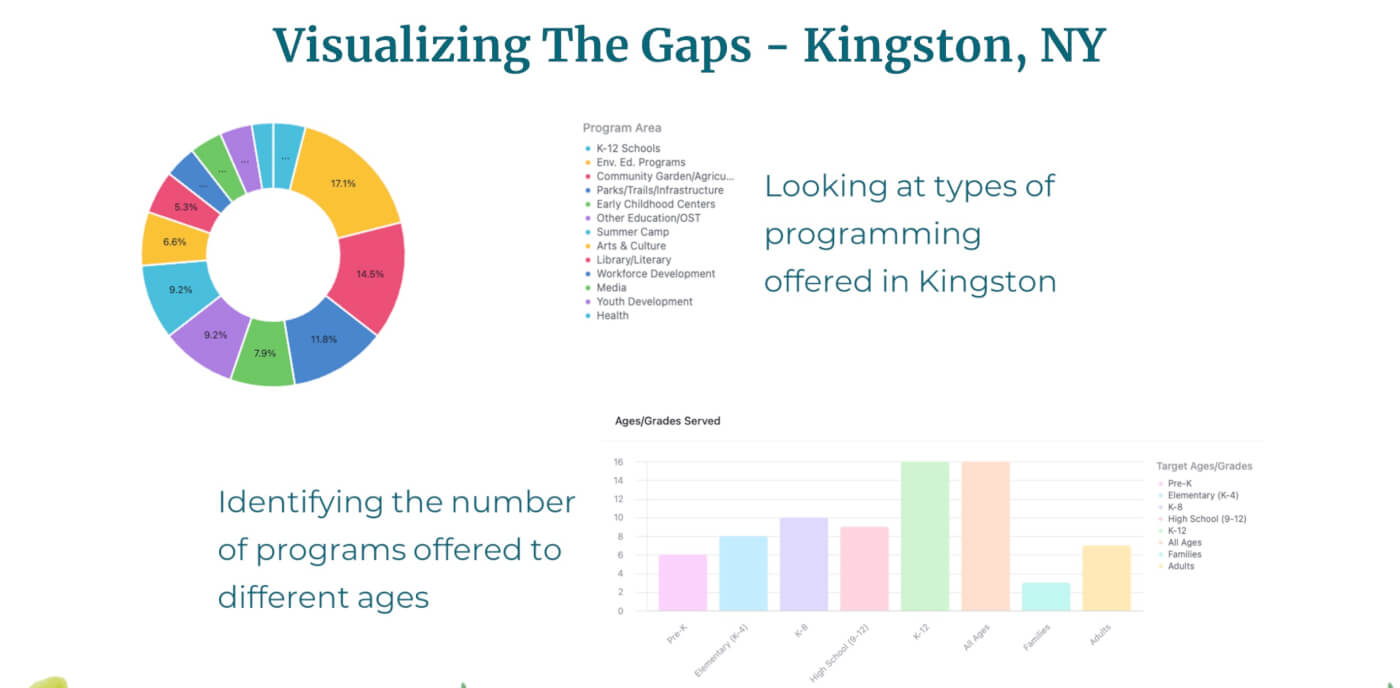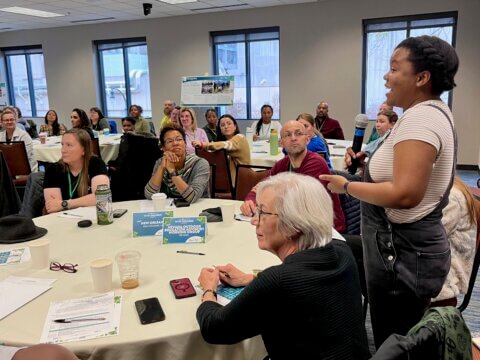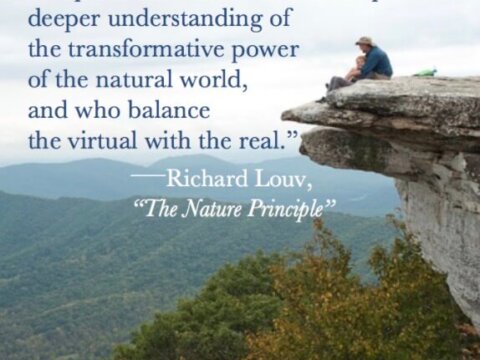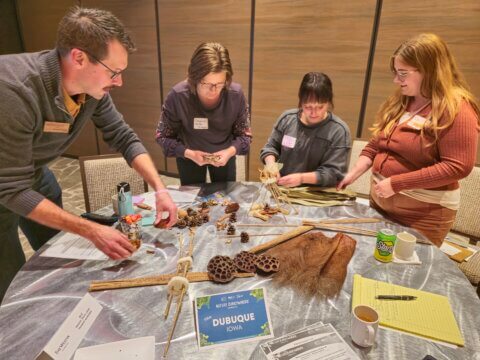Nature Everywhere Communities: 3 approaches to community engagement
At a summer camp in Longmont, Colorado, children draw their ideal playgrounds. At an Earth Day expo in Groton, Connecticut, youth and families decorate a poster with colorful sticky notes, answering the question, “What should every kid get to do in terms of outdoor experiences?” At a stakeholder meeting in Kingston, New York, nature connection leaders talk about how they’re supporting youth — and where they see gaps in access.
These are all examples of community engagement in action. Community engagement is a process organizations and entities use to collaborate with communities — whether they’re united by geographical proximity or by common interests, like culture, belief or profession. It can take a lot of different forms, but its goals are always the same: Listening to community voices, understanding common values and forging buy-in and commitment to shared outcomes.
Community engagement is one of the earliest and most critical steps a community can take toward furthering nature connection for children — making it an important tool for Nature Everywhere Communities.
The Nature Everywhere Communities initiative is a partnership between the Children & Nature Network, National League of Cities and KABOOM! Its mission is to increase equitable access to nature everywhere children live, learn and play in 100 U.S. communities by 2025.
“Community engagement is a chance to not only center equity as you design your city’s initiatives,” says Priya Cook, Director of Green Schoolyards & Communities for the Children & Nature Network, “but also to co-create with the people who will use them.”
That’s important, Cook says, because the people who live in the city, including children and youth, are going to have the best sense of its barriers, strengths and interests when it comes to spending time outdoors. “Ultimately, any initiative that’s led by partners or institutions is only going to be as successful as the community’s sustained involvement in it — so they have to be centered from the beginning.”
As we wrap up the first full year of Nature Everywhere, many of the Nature Everywhere Communities are in the process of completing community engagement activities. Here are some great examples from the field.
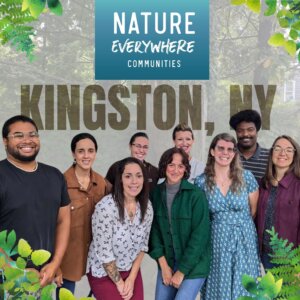
The Nature Everywhere Kingston team, based in Kingston, New York.
Kingston, New York: Capturing landscape scan learnings
A critical part of planning for community engagement is figuring out how you’ll store, analyze and share the input you gather. “Sharing back what you learn with your community creates an ongoing conversation,” Cook says. “That helps build trust and co-ownership of initiatives and outcomes.”
For example, Nature Everywhere Kingston recently completed a landscape scan to better understand nature access in their city.
Their core team includes people from the education, nonprofit and municipal sectors. In brainstorming sessions, they built a comprehensive list of local organizations, entities and policies that connect Kingston youth to nature — then looked at how each served the community, from age groups to programming.
The team collected all that data in a spreadsheet using Airtable, a free cloud-based program that enabled them to generate charts and visualize the opportunities Kingston youth have to access the benefits of nature — as well as any gaps. For example, a bar chart of programs sorted by age revealed that Kingston offers a lot of nature programming for elementary and middle school students, but not much for families.
Now, Nature Everywhere Kingston plans to build on that data by reaching out to families and youth through surveys and events, like the Kingston Earth Fair, to gather input on how they already engage and how they’d like to be engaging in nature-based activities.
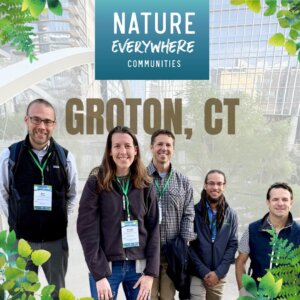
The Go Groton team, based in Groton, Connecticut.
Groton, Connecticut: Gathering youth input
After completing their landscape scan, Nature Everywhere Community GO Groton realized that their town’s elementary school children had a lot of opportunities to connect with nature, but those experiences and programs dropped off once youth reached middle and high school. In response, they’re creating opportunities to talk with Groton’s older youth about how they spend time in nature and how their nature access could be improved.
Recently, GO Groton team members met with a group of local high school students.
The conversation revealed that youth see cost as a barrier to nature access. For example, Groton Parks and Recreation has strong programming with a lot of options for youth, but most activities require registration fees.
To continue that dialogue, GO Groton has hired a youth leader, Tamara Berry, and two high school interns. Their role will be to deepen insight into youth interests by engaging with their peers at school, as well as visiting elementary and middle schools. They’ll be digging further into the barriers to nature access in Groton, asking questions like: Do you have green space near you? Do you find it welcoming? And, do you have the gear to be outside? They’ll also bring a fresh perspective to how the Groton team approaches outreach, from social media to tabling events.
The Go Groton team will share this data and feedback with Groton’s elected bodies, and it will be used to create the town’s children’s outdoor bill of rights and the team’s nature equity plan.
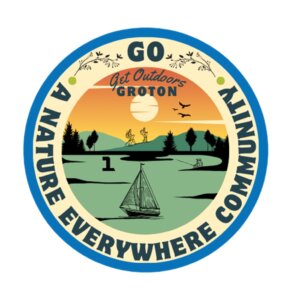
Go Groton Youth Leader Tamara Berry created this logo for the Nature Everywhere Community team.
Bringing youth leaders into the community engagement process also gives them the opportunity to participate in civic discourse and practice skills like budgeting and compromise. “It introduces young people to spaces where they can advocate for others,” Cook says. “Hopefully, these experiences influence them to continue building a relationship with their community — and to continue being leaders.”
Longmont, Colorado: Inviting everyone to the table
As all of these examples reinforce, strong community engagement — like all strategies for systems change — is rarely the work of one or two entities. In fact, by definition, truly equitable outcomes can only be reached if all stakeholders are at the table — including youth and children.
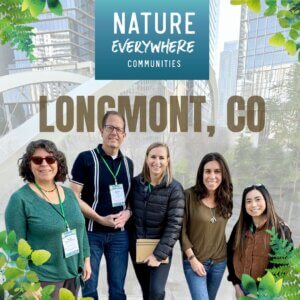
The Nature Everywhere Longmont team, based in Longmont, Colorado. The full team includes partners from over 20 local organizations and agencies.
When a community assessment revealed a need for input from their town’s Latinx community, the Nature Everywhere Longmont team hired local Latinx youth and adults as outreach ambassadors. The outreach ambassadors visited the places where their communities meet, from events to local taquerías to gatherings of family and friends. They used a survey, available online and in print, to learn more about what nature means to their communities, gathering over 355 responses from adults and older youth. One simple insight gained: most people preferred to respond on paper rather than using the digital survey.
Nature Everywhere Longmont also hired a professional evaluator to lead focus groups at local summer camps and youth and family programs, helping the Nature Everywhere team connect with kids in a personal and developmentally appropriate way. For example, elementary school students drew journey maps of their ideal outdoor spaces and activities, while middle and high school students paired photographs with voice recordings to describe nature in their community.
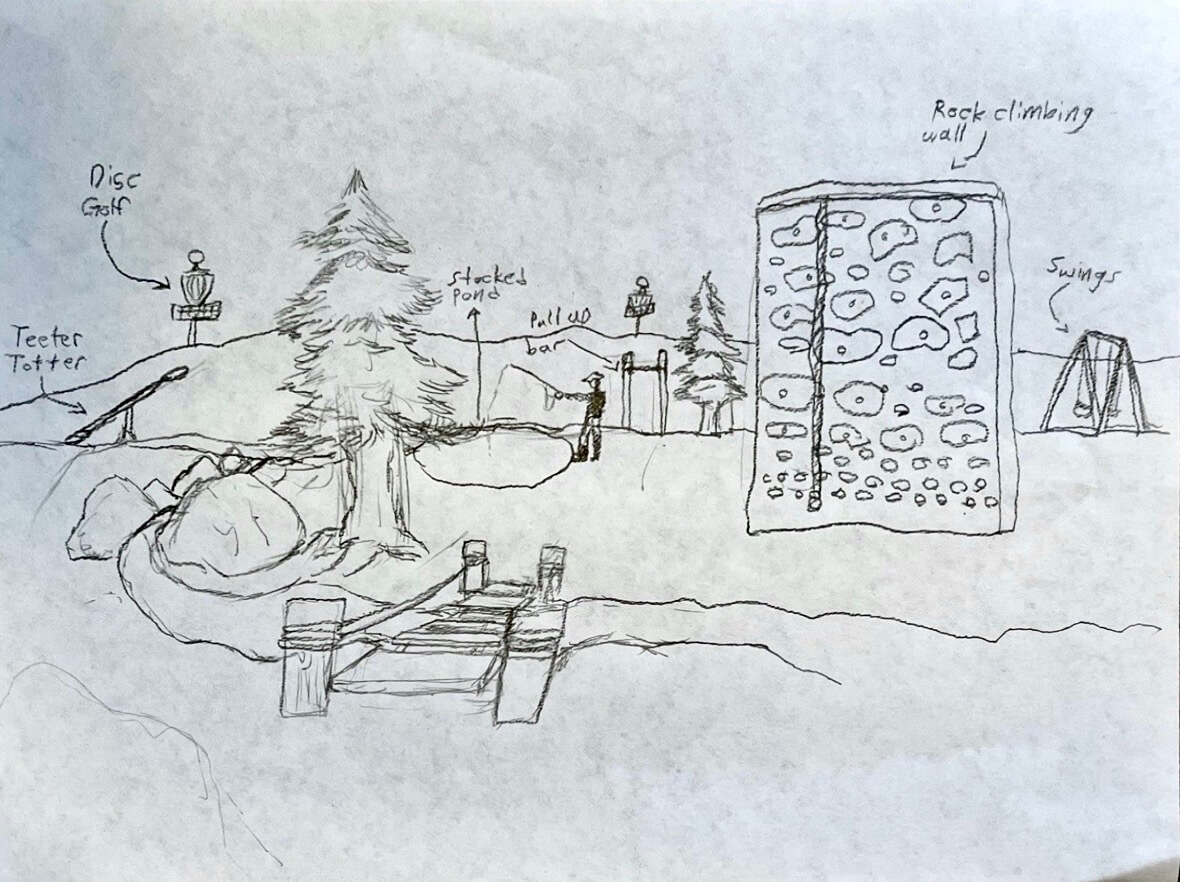
In focus groups held at summer camps, elementary school students drew journey maps of their ideal nature spaces. Photo courtesy of Julie Byle.
Cook says it’s gratifying to be able to share the progress of the first cohort of Nature Everywhere teams, as well as what they’ve learned along the way, to help boost everyone’s success. “There’s a lot of wisdom in the network,” says Cook. “If someone has figured out the best approach to something or uncovered a pitfall that others may want to avoid, we can use peer-to-peer connections to help accelerate each other’s learning.”
“Community engagement can really be a daunting process,” she adds. “It’s exciting to be at the point where teams are in a dialogue with their communities, building insights and relationships that will lead them to specific strategies and actions. We’re all really excited to see the fruits of that work!”
Nature Everywhere Community Engagement Guide
Nature Everywhere Landscape Scan Guide
Strategies for Youth Engagement & Leadership
The Perfect Pairing: Youth Development and Nature Connection, a Finding Nature News story
Workshop Recording: Understand Your Community’s Resources Through a Landscape Scans
-
Network News
POLICY UPDATE: Policy and advocacy for the children and nature movement
-
Voices
Binoculars, bald eagles and my journey as a Black birder
-
Richard Louv
THE WONDER BOWL: Ten Spring and Summer Nature Activities for Kids and Adults
-
Network News
Minneapolis Spotlight: The promise and possibilities of parks for youth
-
Voices
Why nature is my motherhood ally


